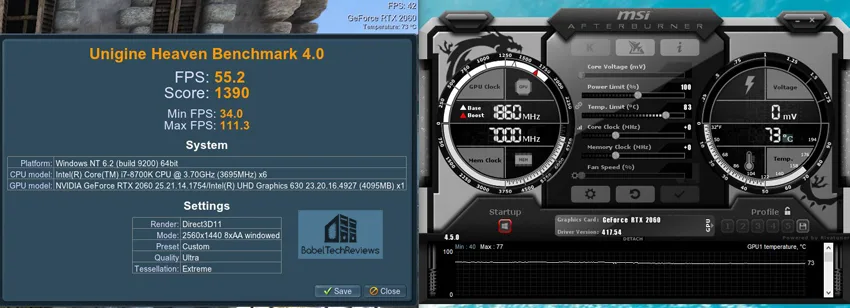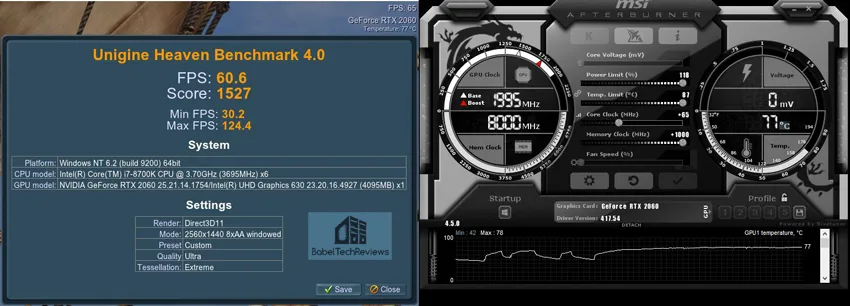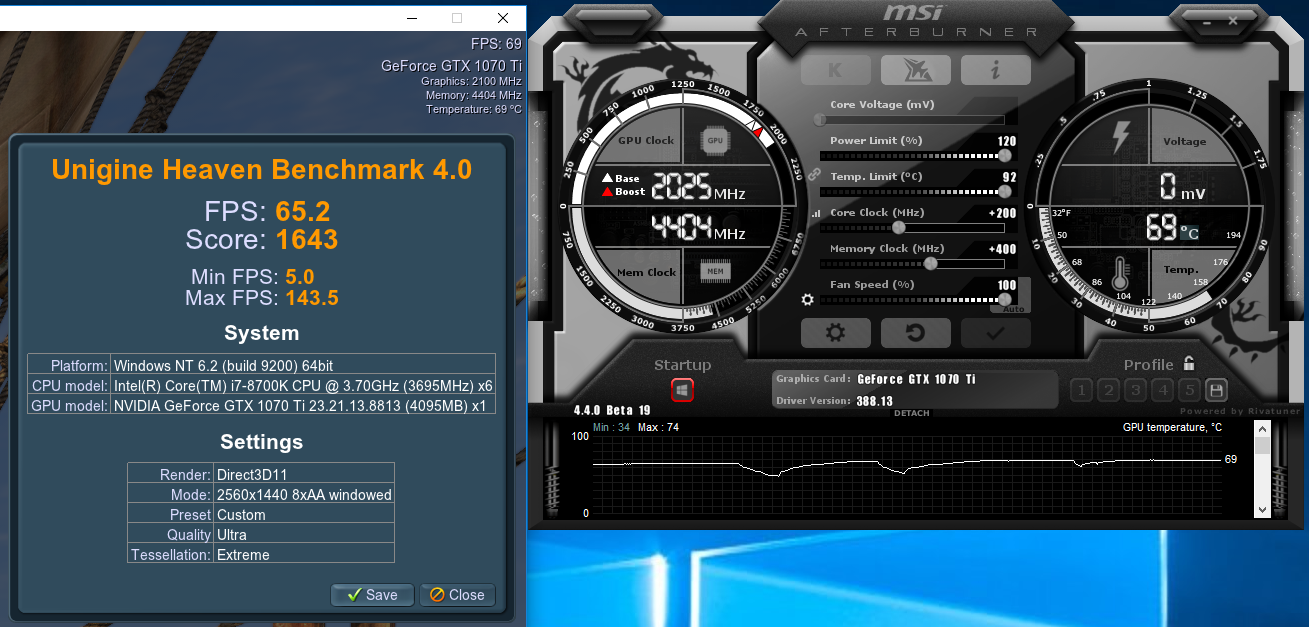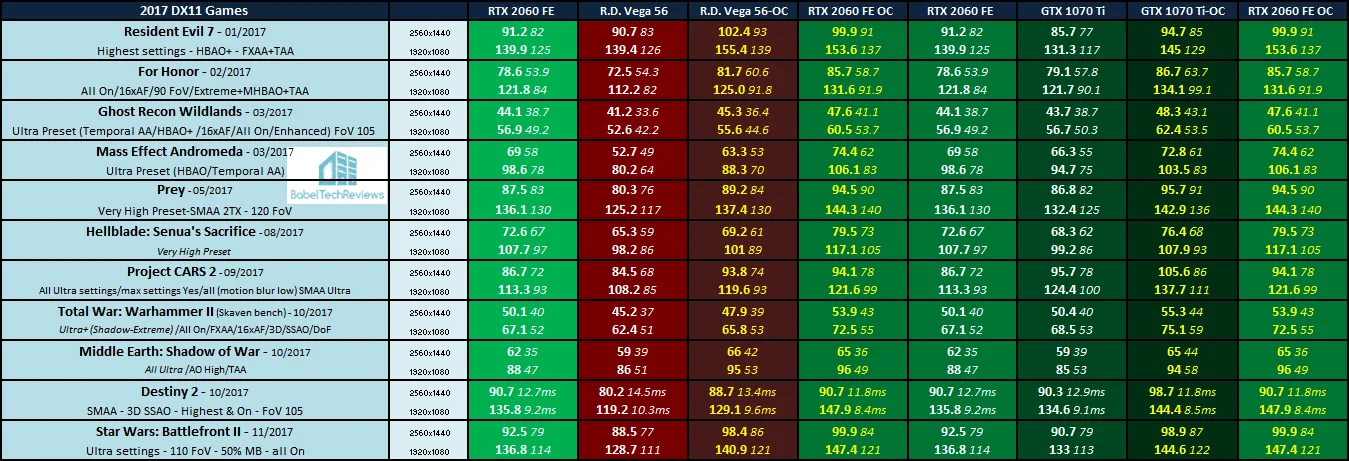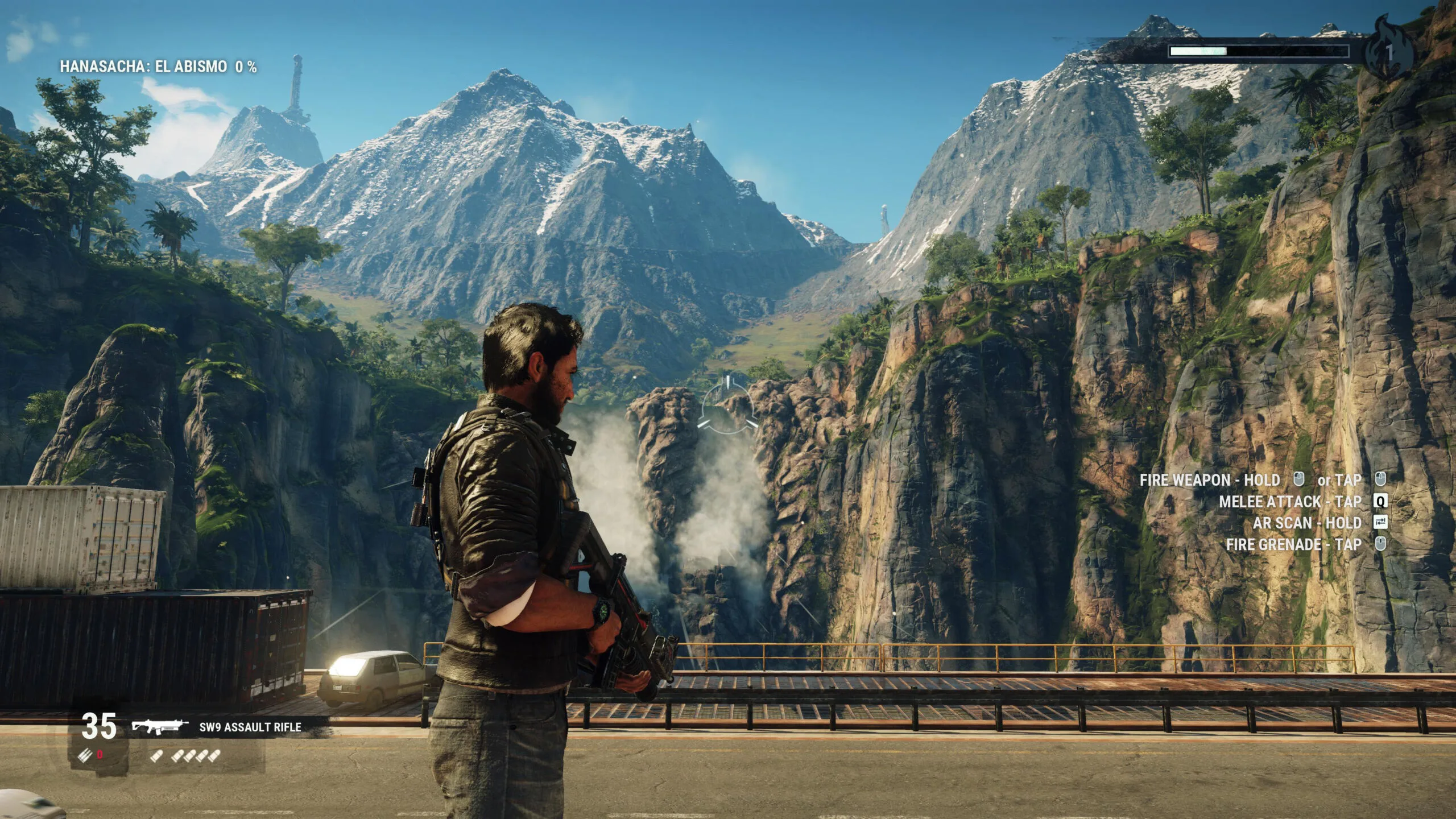The RTX 2060 FE vs. the Red Devil RX Vega and vs. the GTX 1070 Ti Overclocking Showdown with 39 Games
This overclocking showdown is the follow-up to the RTX 2060 6GB Founders Edition (FE) versus the PowerColor Red Devil RX Vega 56 8GB and versus the GTX 1070 Ti 8GB review earlier this week. Today, we have optimized and maxed-out our overclocks with all performance options set to their highest limits to get the most performance from each card.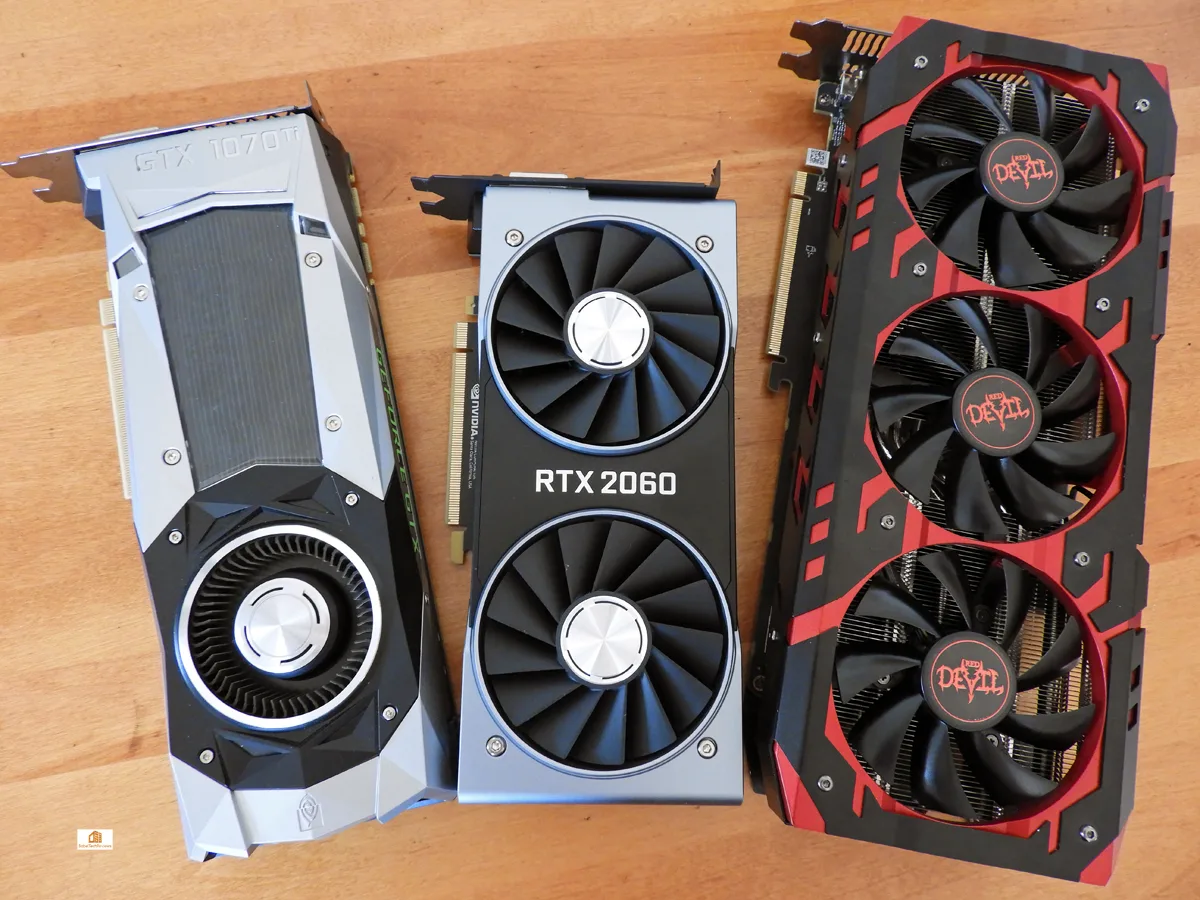
At stock, the RTX 2060 FE won the majority of the 39 games we tested over the Red Devil RX Vega 56, and it also beat the GTX 1070 Ti. This time, we will overclock all three cards manually each as far as they will go to see where they stand in relation to each other when fully overclocked.
The RTX 2060 OC
We ran Unigine’s Heaven Benchmark 4.0 to set our preliminary overclocks. With everything at stock, the boost flatlined at 1860MHz after the card warmed up to around 73C.
At stock clocks but with temperature and power targets set to maximum, looping Heaven resulted in a cool-running GPU in the mid-70sC with Boost 4.0 settling in around 1875MHz and well above the 1680MHz minimum Boost.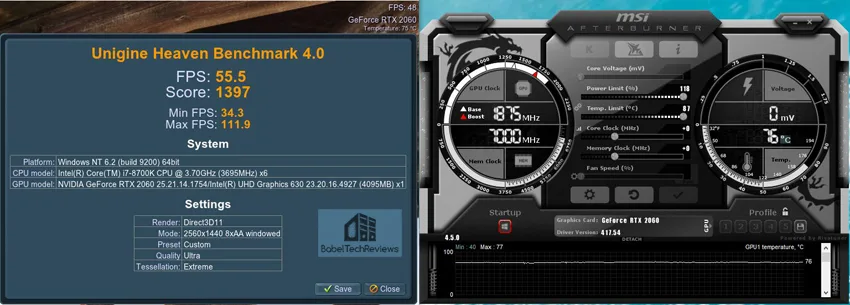
We were able to add 65MHz to the core and we were also able to add +1000 MHz to the RTX 2060 FE’s GDDR6 memory clocks. Performance went way up and temperatures remained in the mid- to upper-70s C with the fan speeds never resulting in any noticeable extra noise under load.
Our final RTX 2060 FE overclock is +65MHz offset to the core and +1000 MHz to the memory while Boost 4.0 settled in above or around 1965MHz to peak around 1995MHz This appears to be a mildly disappointing core overclock as the RTX 2060 is expected to top out around 2050MHz.
The Red Devil RX Vega 56 OC
The PowerColor Red Devil RX Vega 56 uses the same two 8-pin PCIe power connectors as the reference RX Vega 56. However, we saw the original reference RX Vega 56 get into trouble with its power delivery as being insufficient for overclocking vs. the GTX 1070 Ti. We also needed to increase the reference RX Vega’s fan speed to 100% to maintain its overclock. In contrast, the Red Devil RX Vega 56 features a 12 phase power delivery and a huge heatsink and 3 fans with 3 BIOSes for the ultimate in stable power delivery with air cooling for enthusiasts.
First we ran Heaven 4.0 with everything at the Turbo preset.
Next we ran Heaven 4.0 with the power setting maxed out (50%) and we see that it gains in performance over the Turbo Preset (15%).
We settled on a 4.5% overclock for an average boost above 1625MHz boost, with its memory clocks overclocked +150MHz to 950MHz from 800MHz. Overclocked and under full load, the Red Devil’s fans ramp up significantly and they can be clearly heard over the sound of our other case fans.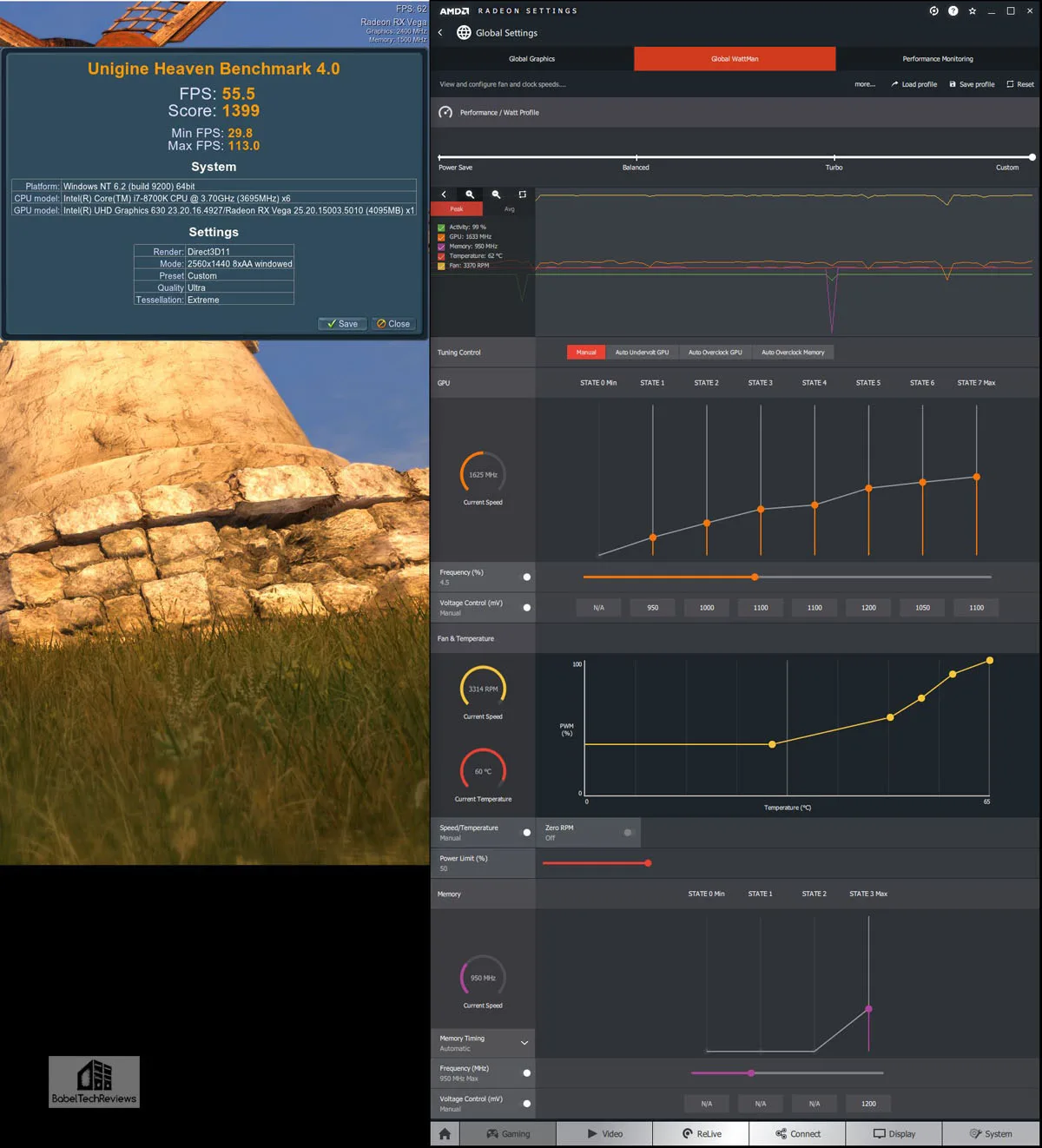 We found that higher memory clocks gained significant performance over a slightly higher core overclock. Adjusting the voltage to achieve the higher memory overclock required undervolting the core and overvolting the memory but we did not we achieved stability in all of our 39 tested games – some of them required lowering the core overclock to 4% with a 930MHz offset to the memory for 100% stability.
We found that higher memory clocks gained significant performance over a slightly higher core overclock. Adjusting the voltage to achieve the higher memory overclock required undervolting the core and overvolting the memory but we did not we achieved stability in all of our 39 tested games – some of them required lowering the core overclock to 4% with a 930MHz offset to the memory for 100% stability.
The GTX 1070 Ti OC
We devoted a separate evaluation to the GTX 1070 Ti which you can read here. The GTX 1070 Ti delivered a sustained 1809MHz Boost as long as the GPU stayed below 84C at stock settings
In our original GTX 1070 Ti review, we decided on a preliminary core offset of +200MHz with +400MHz added to the memory clocks. Our maximum sustained average boost was 2025MHz and our memory clocks stayed at 4404MHz but our overclock turned out to be somewhat optimistic. Fully overclocked, the GTX 1070 Ti tends to ramp up its fan and it can be heard over the case fans although it is never intrusive.
Our final overclock to the GTX 1070 Ti turned out to be a 170MHz offset to the core and 380MHz to the memory resulting in an average core Boost of 1995MHz and 4304MHz memory overclock. There was some slight throttling which began to occur at 84C while we were overclocking and the boost would drop to around 1975MHz.
Testing Platform
We test 39 games and 4 synthetic benchmarks at 1920×1080 and at 2560×1440. Our testing platform is a recent install of Windows 10 64-bit Home Edition, and we are using an i7-8700K which turbos all 6 cores to 4.7GHz, an EVGA Z370 FTW motherboard, and 16GB of HyperX DDR4 3333MHz. The games, settings, and hardware are identical except for the cards being compared.
Before we run our overclocked benchmarks, let’s check out the test configuration.
Test Configuration – Hardware
- Intel Core i7-8700K (HyperThreading and Turbo boost are on to 4.7GHz for all cores; Coffee Lake DX11 CPU graphics).
- EVGA Z370 FTW motherboard (Intel Z370 chipset, latest BIOS, PCIe 3.0/3.1 specification, CrossFire/SLI 8x+8x), supplied by EVGA
- HyperX 16GB DDR4 (2x8GB, dual channel at 3333 MHz), supplied by HyperX
- RTX 1060 6GB Founders Edition, at stock FE clocks and overclocked, on loan from NVIDIA.
- PowerColor Red Devil RX Vega 56 8GB, at stock Red Devil clocks and overclocked, on loan from PowerColor
- GTX 1070 Ti 8GB Founders Edition, at stock FE clocks and overclocked, on loan from NVIDIA.
- 2 x 480 GB Team Group SSD; One for Radeon and one for GeForce
- 1.92 TB San Disk enterprise class SSD
- 2 TB Micron 1100 SSD
- Seasonic 850W Gold Focus power supply unit
- EVGA CLC 280mm CPU water cooler, supplied by EVGA
- Onboard Realtek Audio
- Genius SP-D150 speakers, supplied by Genius
- EVGA DG-77, mid-tower case supplied by EVGA
- Monoprice Crystal Pro 4K
Test Configuration – Software
- GeForce 417.54 WHQL drivers are used for both GeForce cards.
- AMD’s Adrenalin Software 18.12.3 are used for the Red Devil RX Vega 56.
- VSync is forced off.
- AA enabled as noted in games; all in-game settings are specified
- Gaming results show average frame rates in bold including minimum frame rates shown on the chart next to the averages in a smaller italics font. OCAT uses .1ms frametime measurements for the minimums also shown in italics.
- Highest quality sound (stereo) used in all games.
- Windows 10 64-bit Home edition latest version and fully updated. All DX11 titles were run under DX11 render paths. DX12 titles are generally run under the DX12 render path unless performance is lower than with DX11. Three games use the Vulkan API.
- Latest DirectX
- All 39 games are patched to their latest versions at time of publication.
- Wattman used for setting the stock and overclocked RX Vega 56.
- MSI Afterburner, latest beta for setting the stock and overclocked GeForces.
- OCAT, latest version
- Fraps, latest version
- Heaven 4.0 Unigine benchmark
39 PC Game benchmark suite & 4 synthetic tests
Synthetic
- Firestrike – Ultra & Extreme
- Time Spy DX12
- Superposition
DX11 Games
- Grand Theft Auto V
- The Witcher 3
- Fallout 4
- Rainbow Six Siege
- Battlefield 1
- Resident Evil 7
- For Honor
- Ghost Recon Wildlands
- Mass Effect: Andromeda
- Prey
- Hellblade: Senua’s Sacrifice
- Project CARS 2
- Total Wars: Warhammer II
- Middle Earth: Shadow of War
- Destiny 2
- Star Wars: Battlefront II
- Monster Hunter: World
- Kingdom Come: Deliverance
- Final Fantasy XV
- Far Cry 5
- The Crew 2
- Assassin’s Creed: Odyssey
- Call of Duty: Black Ops 4
- Hitman 2
- Just Cause 4
DX12 Games
- Tom Clancy’s The Division
- Ashes of the Singularity: Escalation
- Hitman
- Rise of the Tomb Raider
- Deus Ex Mankind Divided
- Gears of War 4
- Civilization VI
- Sniper Elite 4
- Forza 7
- Shadow of the Tomb Raider
- Battlefield V
Vulkan Games
- DOOM
- Wolfenstein: The New Colossus
- Strange Brigade
AMD Control Center Radeon Settings
All AMD settings are set so as to be apples-to-apples when compared to NVIDIA’s control panel settings – all optimizations are off – Vsync is forced off, Texture filtering is set to High, and Tessellation uses application settings.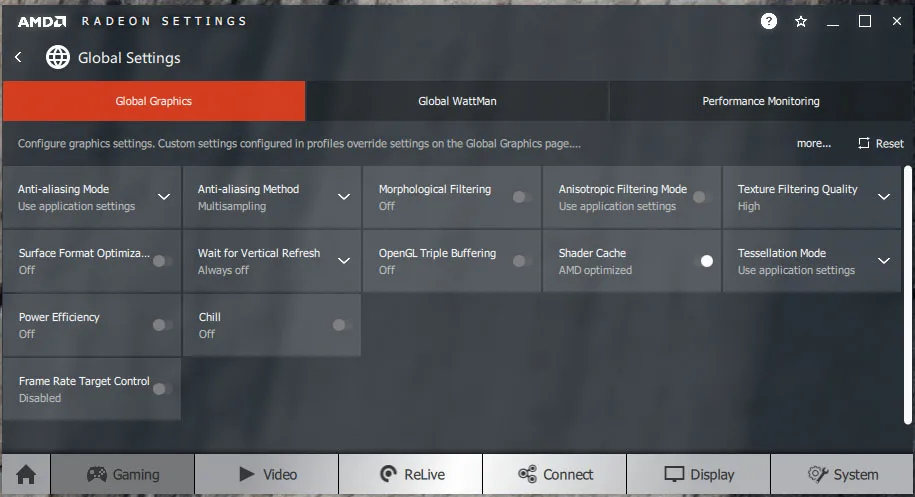
We use Wattman to set the Red Devil’s power, temperature and fan settings to their maximums to prevent throttling which increase performance over the stock or even the Turbo preset. We also used Wattman to overclock which involved undervolting the core to overvolt the memory for a maximum overclock.
NVIDIA Control Panel settings
Here are the NVIDIA Control Panel settings.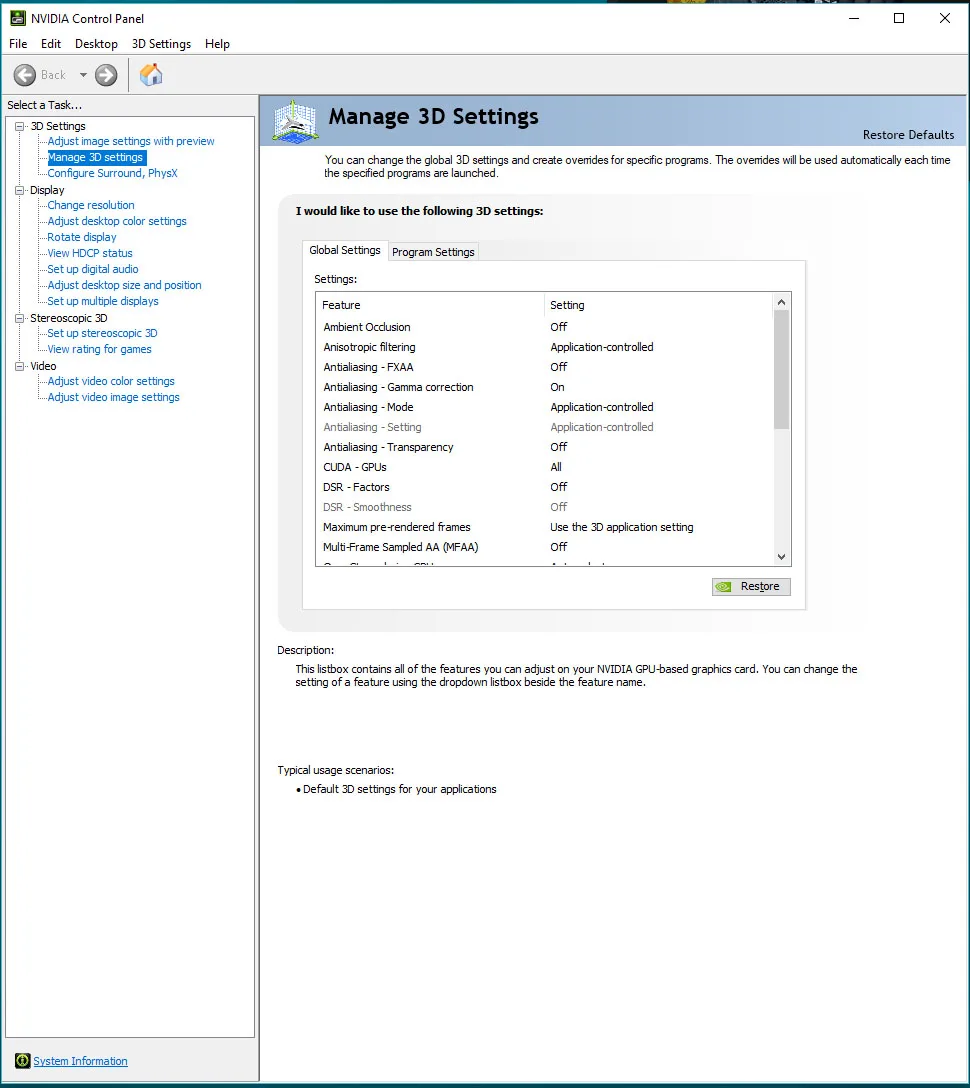
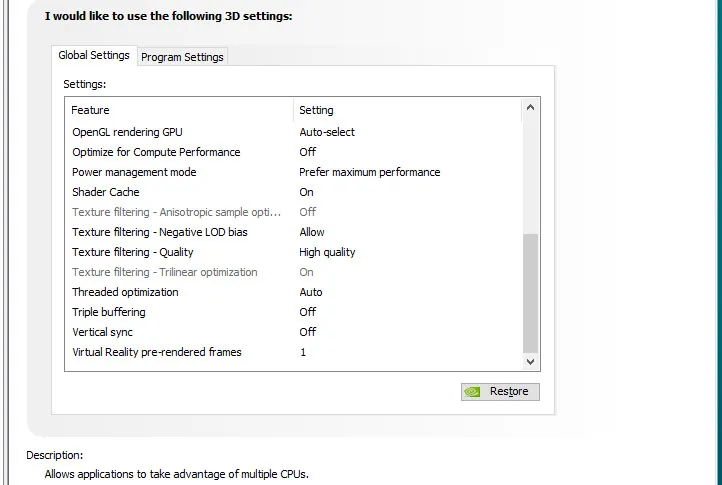 We used MSI’s Afterburner to set our GeForces’ highest Power and Temperature targets. By setting the Power Limits and Temperature limits to maximum for each of our two test cards card, they do not throttle, but they can each reach and maintain their individual maximum clocks while overclocked.
We used MSI’s Afterburner to set our GeForces’ highest Power and Temperature targets. By setting the Power Limits and Temperature limits to maximum for each of our two test cards card, they do not throttle, but they can each reach and maintain their individual maximum clocks while overclocked.
Performance summary charts
Here are the performance results of 39 games and 2 synthetic tests comparing the stock and overclocked Red Devil RX Vega 56 8GB versus the stock and overclocked RTX 2060 6GB and versus the stock and overclocked GTX 1070 Ti 8GB. The highest settings are always chosen and the settings are listed on the charts. The benches were run at 1920×1080 and at 2560×1440.
Most gaming results show average framerates in bold text, and higher is better. Minimum framerates are next to the averages in italics and in a slightly smaller font. A few games benched with OCAT show average framerates but the .1 minimums are expressed by frametimes in ms where lower numbers are better. All overclocked numbers are represented by yellow text while stock values are in white text. The RTX 2060 results are repeated in the charts below to make it easy to compare directly with the Red Devil RX 56 and with the GTX 1070 Ti
The first four columns are devoted to the Red Devil RX Vega 56 versus the RTX 2060. The last four columns are devoted to the RTX 2060 versus the GTX 1070 Ti. “OC” refers to the overclocked cards’ performance and the overclocked results are shown in yellow text. As always, open each chart in a separate tab for the best viewing.
Nothing has really changed significantly overall with overclocking. We see all three cards each gain decent performance from overclocking. The RTX 2060 wins more benchmarks than it loses at either stock or overclocked against both competing cards although a few individual results may shift between them due to variability in overclocking.
Let’s check out our conclusion.
Conclusion
This has been quite an interesting exploration for us in evaluating the manually overclocked RTX 2060 FE versus the overclocked Red Devil RX Vega 56 and versus the overclocked GTX 1070 Ti. All three cards appear to scale well with each of their respective overclocks although the overall ranking has not changed significantly from the stock values in our original RTX 2060 FE review.
The RTX 2060 is the quietest card of the three cards and it is quieter than the GTX 1070 Ti and significantly quieter than the Red Devil RX Vega 56 when all of the cards are overclocked and under full load. The RTX 2060 is a strong performer either at stock or overclocked, and at $349 it deserves BTR’s Editor’s Choice Award.
Early next week we will continue our Driver Performance Analyses series with a new post as a new Radeon Software Adrenalin 19.1.1 driver edition from AMD has dropped yesterday.
Happy Gaming!
